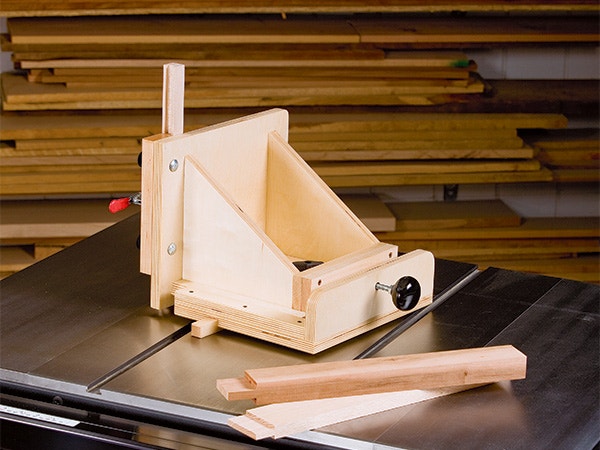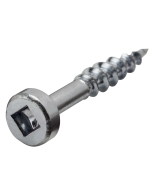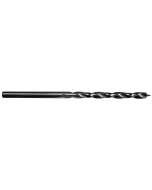DIY Table Saw Tenoning Jig
The cleanest way to cut tenons on a table saw is with workpieces standing vertically. To do it safely, you need a tenoning jig that holds parts upright and securely as you run them through the blade.
The jig should also offer precise adjustability so you can cut tenons of many sizes and then trim them for a perfect fit in the mortise.
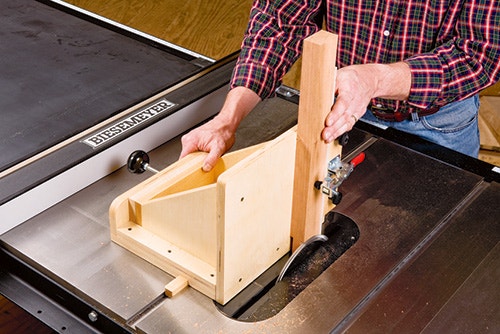
This jig satisfies both goals in spades. Its upper carriage slides back and forth across the base on a pair of beveled guides, and the lateral travel is simple to fine-tune with a carriage bolt and knob in back. A toggle clamp and backstop anchors the workpiece. To save the backstop from blade carnage, I've added a replaceable strip that fits onto a sliding dovetail. All in all, it's a must-have jig for any shop, so here’s how to build one for your saw.
Assembling the Base and Carrier Plate
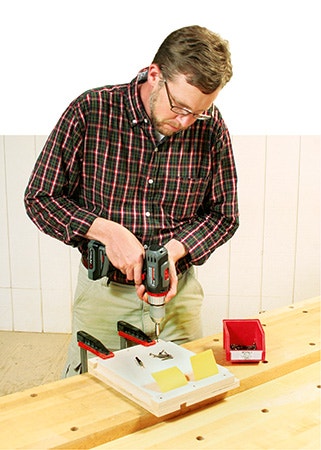
Cut the base, carrier plate and guide strips (pieces 1 through 3) to size. Plow a 3/8"-deep dado along the length of the base that matches the width of your saw's miter slots exactly — it will house a runner, later, that guides the jig. Drill a 5/16"-diameter bolt hole through the base at its centerpoint.
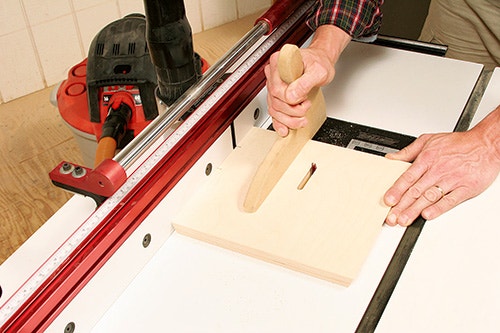
Now, switch back to your standard blade, and tilt it to 20°. Bevel-cut the short ends of the carrier plate and one long edge of both guides. The Drawings will show you that the complementary bevels on these parts form a big sliding dovetail joint that holds the carrier plate against the base. Screw the guides to the base with the carrier plate in place, then shift the carrier over so one edge is flush with the edge of the base; we'll call this the "front" edge. Extend the bolt hole in the base up through the plate. You've now created a starting point for routing a 2-1/4"-long slot toward the back of the carrier plate. The slot will house a carriage bolt and hold-down knob (pieces 4 and 5) that lock the carriage in place during tenoning operations. Step to your router table and complete that slot. Then, drill a 3/4"-diameter shallow counterbore into the bottom of the base to recess the carriage bolt head.
Next, follow the Drawings to make and attach two fence braces (pieces 6) to the carrier. Their 7-1/2"-long edges should be flush with its front edge. Slide this carriage assembly back onto the base. Cut and fasten the fence (piece 7) to the fence braces; align its bottom edge with the bottom of the base.
Installing the Carriage on the Base
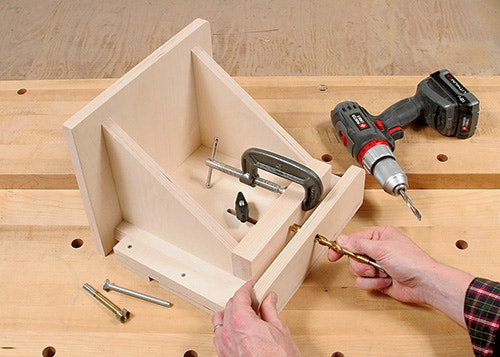
Cut the support bracket (piece 8) to shape, and drill a 15/32" through-hole where it's indicated on the Drawings. Fasten the bracket to the top of the base right behind the guides. Now make up two bearing blocks (pieces 9). Slip them between the support bracket and the fence braces. These blocks will capture the head of the carriage bolt (piece 10) that moves the carriage back and forth.
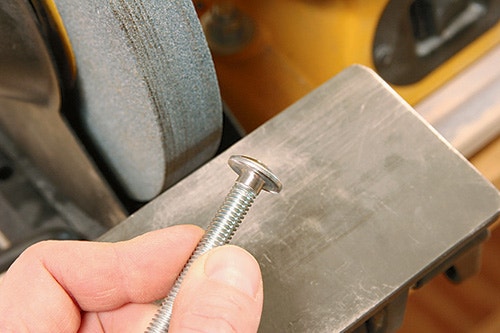
Mark the centerpoint for this bolt hole by sticking your 15/32" bit through the hole in the support bracket and pricking the back bearing block. This block receives a 5/16" bolt hole and a counterbore for the bolt head (see Drawings). Drill those holes now.

The long carriage bolt will spin inside the bearing blocks if you grind or file off the "flats" under its head. When that's done, fasten the front bearing block to the fence braces, slip the bolt through the rear block and glue and screw the two blocks together. I smeared a dollop of paste wax into the bolt head counterbore first, to help it twist easily.

Your last step to installing the carriage is to screw a threaded insert (piece 11) into the support bracket hole you drilled earlier. Slide the carrier onto the base, and engage the carriage bolt and insert. Wind the bolt far enough through so you can spin on a jamb nut and the adjustment knob (pieces 12 and 13). Test the action of the carriage by turning the knob in both directions. If things work smoothly, remove the carriage, sand the parts and apply finish.
Installing the Carriage on the Base

While the finish dries, make up the workpiece stop and edging strip (pieces 14 and 15). I routed a dovetail pin along the front edge of the stop and a corresponding dovetail slot in the edging strip so these parts fit together. Make up a bunch of edging strips while you're at it — they'll get chewed up by the blade during tenoning. You can trim off the damaged portion and reuse the edging several times, sliding it farther down the stop. When it gets too short to work properly, switch to a fresh strip.

Use a pair of carriage bolts and knobs (pieces 16) to mount the stop on the fence, and slide an edging strip into place. Wrap up your handy new tenoning jig with a hardwood runner (piece 17) for the miter slot — attach it with short screws driven down through the base. I used hard maple because it is so dense that it wears well in this sort of situation. Test the piece in the miter slot to be sure that it slides freely along the length of the slot. The last task that you have is to fasten a toggle clamp (piece 18) to the stop about midway along its length.
Once that work is done, you're ready to start cutting tenons, safely and accurately, with your hands well away from the saw blade.
Keep the inspiration coming!
Subscribe to our newsletter for more woodworking tips and tricks
